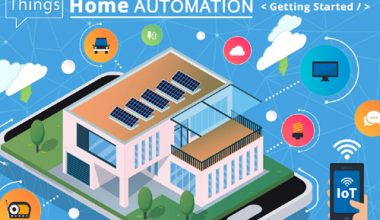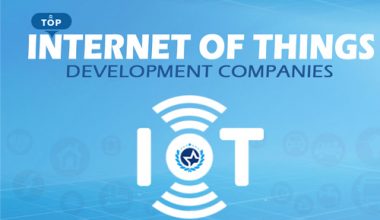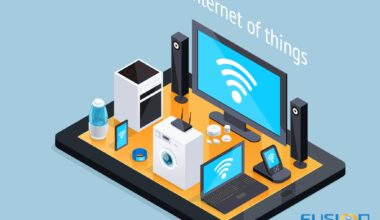In the world of internet-of-things (IoT) devices, operating systems are critical. They’re what allow these devices to communicate with each other and with the outside world. But choosing the right OS isn’t as easy as it looks: you’ll need to consider a host of factors that will determine how well your project succeeds.
So in this article, we’ll outline some guidelines for choosing an IoT OS so you can make sure your device does all it needs to do for years to come.

Why Select the right OS for IoT devices?
Selecting the right operating system for your IoT devices can be a challenge. There are many different operating systems to choose from, used in a wide range of applications, from embedded computing to mobile devices and even desktop systems.
OS selection is critical to the success of your project and should be done with care. The OS you choose will have a big impact on the success of your project, so it’s important that you make an informed decision about which one is best suited to meet your needs.
Get IoT OS Selection Right
IoT OSs come in many forms, and are available for many types of devices and applications. IoT OSs are available as open source, commercial and proprietary. Open source IoT OSs can be downloaded for free or used on a trial basis.
Commercial IoT OSs require payment to use the software but usually offer additional services such as support and training, while proprietary IoT OSs are often provided at no cost to end users.
Open source IoT operating systems can be customized by developers according to the needs of end users. These operating systems are also typically supported by a community of enthusiasts who may share their work online using websites like GitHub or other channels like IRC chat rooms or forums where they discuss ideas with one another about how best to improve their current product offering based on user feedback..
How well does the OS match the needs of the project?
- Open source: An open-source operating system is one that uses open-source software and has an open development model. It’s a good choice for projects that want to allow users to modify the code.
- Flexibility: An IoT device needs to be flexible, meaning it can run on any hardware platform or form factor. This means it shouldn’t have heavy dependencies on hardware or other software components, and its architecture should be modular enough to allow for extensions and customizations by third parties without breaking the core functionality of the system.
- Extensibility: You’ll want your device’s OS to support extensibility via plug-ins, APIs, drivers/stacks and frameworks so you can add new functionality as needed while maintaining backward compatibility with previous versions of your product line (to avoid customer confusion).
- Portability: Your device needs portability so it can run across multiple platforms without needing significant adaptations at each step along the way—ideally in different environments (such as mobile vs. IoT), languages/environments (Java vs C++) etc.
What kind of performance is required from the OS?
The first question to ask is: what kind of performance is required from the OS? The answer depends on many factors, including how much RAM and storage you have available, what kind of processor you’re using, and how your device connects to the internet.
For example, if you’re building an IoT device with a small footprint that only needs to send data over Wi-Fi or Bluetooth once in a while (rather than constantly), then Linux or Windows may be sufficient for your needs.
In this case, performance won’t be as important as flexibility when it comes to choosing an operating system—you can use whichever OS fits best with your application’s development environment.
What level of security do the IoT devices need?
As the name suggests, high-security IoT devices are the ones that require higher levels of protection and security. High-security IoT devices are used in industries such as healthcare, defense and military.
These devices can be accessed by only authorized users within a particular organization or domain. For example: if you need to access your fitness band’s data from your smartphone then you will have to enter its PIN number first before accessing any information from it.
High-security IoT devices usually use authentication mechanisms such as tokens, certificates or digital signatures for authentication purposes.
They also provide strong encryption facilities so that only authorized people can access them remotely through the internet or wired networks (wired network is a dedicated physical connection between two sites).
How well can the OS scale to meet the future needs of the project?
The OS needs to be able to scale with your project. This is especially important if you’re building something that will grow, change, or have a long lifespan.
For example, if you have a web application and plan on adding mobile apps later on (or vice versa), it makes sense that the OS should work across all these platforms without having to rewrite your code base each time you add another platform.
This is also important if the project requires new features in order for it to function properly—for example, if there are new hardware features that need to be supported by the operating system before they can be implemented in your product (e.g., Bluetooth Low Energy).
Or perhaps there are software changes needed before they can be added into the OS itself (such as an update from Android Lollipop 5x to Android Marshmallow 6x).
Follow these guidelines to make it easier to choose an operating system for your internet-of-things devices.
To make it easier to choose the right OS for your internet-of-things devices, consider the following guidelines:
- Choose an operating system that meets the needs of your project. For example, if you’re building a remote control for a drone, you’ll want one with special features for controlling drones.
- Consider performance requirements such as CPU power and memory usage when deciding on an operating system. If you have a number of applications running concurrently on your device and each application has high demands for resources, then it may be best to select an operating system with more powerful hardware capabilities.
- Think about security requirements such as authentication and authorization when selecting an operating system so that only authorized users can access certain parts of your application or device while unauthorized users cannot do so. You also need to ensure that sensitive data is encrypted in order to avoid any security risks associated with leaking confidential information over unencrypted networks like Wi-Fi or cellular networks (e.g., cellular).
- Determine whether scalability is important so that your application can scale up in terms of usage volume over time without experiencing significant latency issues due to resource contention between multiple clients making requests simultaneously (this could happen if there aren’t enough CPUs available) or network congestion during peak hours when many people would like access simultaneously.
Conclusion
In summary, IoT devices require specific software to run their applications. It’s important to choose the right operating system for each device depending on its specific needs.
For example, if you’re working on an Internet of Things project that involves data exchange between devices or cloud storage of big amounts of data from multiple sources, then having a robust OS such as Linux or Windows 10 would be ideal for it.
On the other hand, if your project is more about controlling simple devices like switches and sensors with limited memory capacity (such as Arduino boards), then using ARM processors like Raspberry Pi would be more appropriate because they are much cheaper than PCs/Macs yet still powerful enough to handle most tasks required by these types of products.




